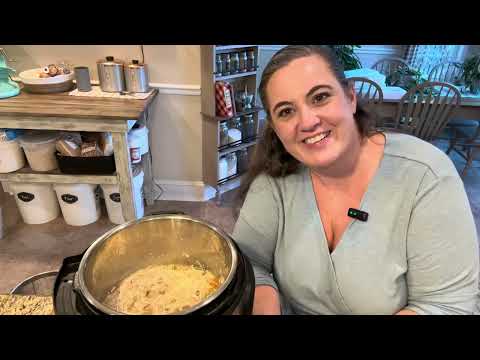
Feeding your dog a healthy and balanced diet is crucial for their overall wellbeing. Many commercial dog foods contain preservatives and fillers that can contribute to health issues, making homemade dog food recipes an attractive alternative.
Chicken is an excellent protein source for dogs, rich in omega-6 fatty acids, essential amino acids, and lean protein. Using chicken in your homemade dog food can help support your pet’s skin and coat health.
By preparing healthy dog treats and meals at home, you can control the ingredients and ensure your pet receives the nutrients they need. This article will guide you through simple and nutritious dog food recipes that you can prepare at home.
Key Takeaways
- Homemade dog food recipes with chicken provide a healthy alternative to commercial dog foods.
- Chicken is a rich source of omega-6 fatty acids, essential amino acids, and lean protein for dogs.
- Preparing homemade dog food allows you to control the ingredients and ensure your pet’s nutritional needs are met.
- Simple and nutritious dog food recipes can be prepared at home with minimal time and effort.
- Homemade dog food can help support your pet’s overall health and wellbeing.
Benefits of Homemade Chicken Dog Food
The benefits of homemade chicken dog food are backed by its rich nutritional profile. Chicken is an excellent source of lean protein, essential for maintaining your dog’s overall health. By preparing homemade dog food, you can ensure that your dog receives the nutrients they need without the additives found in commercial dog food.
Nutritional Advantages of Chicken for Dogs
Chicken provides numerous nutritional benefits for dogs. It is rich in omega-6 fatty acids, which are crucial for maintaining healthy skin and a shiny coat. The lean protein in chicken supports muscle development and maintenance, making it an ideal ingredient for dogs of all ages and activity levels.
- Chicken is a rich source of lean protein, supporting muscle health in dogs.
- The omega-6 fatty acids in chicken promote healthy skin and a shiny coat.
- Homemade chicken recipes allow you to avoid common allergens found in commercial dog food.
Why Homemade Can Be Better Than Commercial Options
Commercial dog food often contains high levels of sodium and fillers that provide little nutritional value. In contrast, homemade dog food made with chicken can be tailored to your dog’s specific dietary needs. By controlling the ingredients, you can avoid artificial preservatives, colors, and flavors that may affect your dog’s health.
Many dogs show increased enthusiasm for mealtime when served homemade food, which can be particularly beneficial for picky eaters. Additionally, homemade dog food can be adjusted to accommodate your dog’s changing nutritional needs throughout different life stages.
Simple Chicken and Rice Dog Food Recipe

For dog owners seeking a straightforward and nutritious meal for their pets, a simple chicken and rice dog food recipe is an excellent choice. This recipe is not only easy to prepare but also provides a balanced and healthy meal for dogs, especially those with sensitive stomachs.
Ingredients List
To make this simple and nutritious dog food, you will need the following ingredients:
- 3 pounds minced chicken meat
- 4 cups rice
- 2½ cups frozen vegetable blend (ensure it’s free from garlic and onions)
- 6½ cups water
This combination provides a good balance of protein, carbohydrates, and essential nutrients for your dog’s overall health.
Step-by-Step Cooking Instructions
Preparing this healthy dog food is straightforward:
- Place the chicken, rice, and vegetables into a large saucepan or Dutch oven.
- Stir in the water until the mixture is smooth.
- Put the saucepan over medium-high heat and bring to a boil, stirring constantly.
- Reduce the heat to medium-low, cover, and simmer for about 25 minutes, or until the rice is tender and the liquid is absorbed.
- Allow the mixture to cool completely before serving.
Proper cooking is crucial to kill any harmful bacteria and maintain the nutritional integrity of the chicken.
Serving Suggestions and Portion Sizes
The serving size will vary based on your dog’s size. A general guideline is to serve about ½ cup for every 20-25 pounds of body weight. This recipe yields approximately 12 cups of food, making it convenient for batch preparation. You can store leftover portions in the refrigerator for quick meals throughout the week.
By following this simple chicken and rice dog food recipe, you can ensure your dog receives a nutritious meal while also saving time during busy weeks.
Chicken with Sweet Potato and Vegetables Dog Food Recipe

A balanced and delicious dog food recipe featuring chicken, sweet potatoes, and carrots is a great way to ensure your dog’s nutritional needs are met. This recipe combines lean protein from chicken with complex carbohydrates from sweet potatoes and essential vitamins from carrots, creating a nutrient-rich meal for your dog.
Ingredients List
The ingredients required for this recipe are:
- 1 lb. chicken breast (skinless and boneless)
- 2 large sweet potatoes
- 1 large carrot
- ½ cup cooked brown rice
These ingredients provide a good balance of protein, complex carbohydrates, and vegetables that support your dog’s overall health.
Preparation and Cooking Method
To prepare this recipe, start by pounding the chicken breast to about 1″ thick. Then, preheat a skillet to medium-high heat and add a small amount of oil. Cook the chicken for about 5 minutes per side, or until it reaches an internal temperature of 165° F. Let the chicken rest before cutting it into 1″ pieces.
Next, peel and chop the sweet potatoes into 1″ pieces and boil them in water until they are tender. Mash the sweet potatoes to your dog’s desired consistency. In the same skillet, add the sliced carrot and cook until it softens. Combine the cooked chicken, mashed sweet potatoes, and carrots, and serve with cooked brown rice.
Nutritional Benefits of Added Vegetables
The addition of sweet potatoes and carrots to this recipe provides numerous nutritional benefits. Sweet potatoes are rich in dietary fiber, vitamin A, and beta-carotene, supporting digestive health and immune function. Carrots add natural sweetness and are a good source of vitamin K, potassium, and antioxidants, which support eye health and immune function.
This recipe is not only healthy but also versatile, as it can be adjusted based on your dog’s preferences and dental health. The combination of ingredients can help maintain your dog’s energy levels and support joint health, making it particularly beneficial for active or aging dogs.
Essential Tips for Making Dog Food Recipes with Chicken

When it comes to making dog food with chicken, there are several key factors to consider. Preparing homemade dog food can be a great way to ensure your pet is getting the nutrients they need, but it requires careful planning and attention to detail.
Safe Food Handling and Preparation
Proper food handling is crucial when preparing chicken for your dog to prevent foodborne illnesses. Always wash your hands, surfaces, and utensils thoroughly before and after handling raw meat. It’s also essential to cook the chicken to an internal temperature of 165°F to kill harmful bacteria while maintaining nutritional value.
Safe handling practices include:
- Washing hands thoroughly before and after handling raw chicken
- Using separate utensils and cutting boards for raw meat
- Cooking chicken to the recommended internal temperature
Storage and Freezing Guidelines
To maintain the freshness and nutritional integrity of homemade dog food, proper storage is essential. Leftovers can be stored in the fridge for 4-5 days or frozen for up to 2 months. Using airtight containers and labeling them with dates can help keep track of how long they’ve been stored.
| Storage Method | Duration | Notes |
|---|---|---|
| Fridge | 4-5 days | Store in airtight containers |
| Freezer | Up to 2 months | Use airtight containers or freezer bags |
Transitioning Your Dog to Homemade Food
When transitioning your dog to homemade food, it’s crucial to do so gradually to prevent digestive issues. Start by mixing a small amount of the new food with their current diet and gradually increase the proportion over 7-10 days. Monitoring your dog’s health and adjusting the transition pace as needed is vital.
Consulting with a vet before making significant changes to your dog’s diet is recommended, especially for dogs with existing health conditions. A veterinary nutritionist can help ensure that your homemade dog food recipes are well-balanced and meet your dog’s nutritional needs.
Conclusion
By choosing to make homemade chicken recipes for your dog, you’re taking a significant step towards ensuring their overall health and well-being. Preparing healthy dog food at home allows you to provide nutritious, fresh meals that can improve your dog’s health and potentially address specific issues like skin problems or food sensitivities.
The recipes shared in this article offer a balance of protein, carbohydrates, and vegetables that can be adjusted to suit your dog’s individual needs and preferences. While making homemade dog food requires some time investment, the benefits of knowing exactly what goes into your pet’s diet make it worthwhile for many dog owners.
By controlling the ingredients in your dog’s food, you can eliminate unnecessary additives, artificial colors, and high sodium content often found in commercial kibble. Whether you choose to make homemade dog food as an occasional treat or as a regular part of your pet’s diet, the recipes in this article provide a solid foundation for healthy, chicken-based meals your dog will enjoy.



